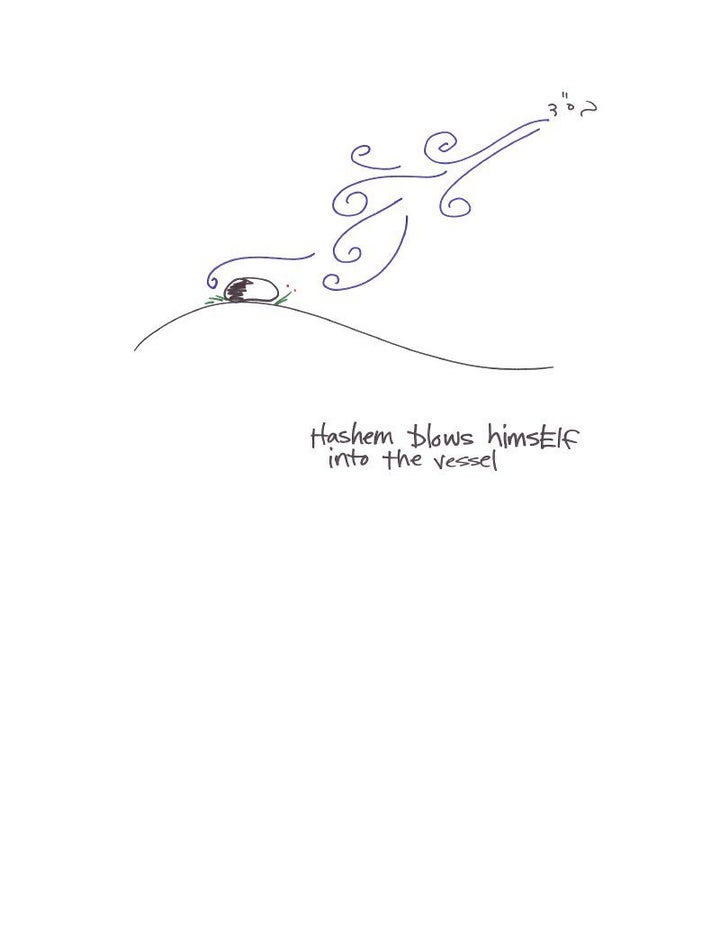
The Tanya is a compilation of works authored by Rabbi Schneur Zalman of Liadi (1745-1812) that serve as the seminal text from which the Chabad Hasidic community derives their ideology. Guiding the reader through Hasidic and Kabbalistic philosophy, the five-part tome was the first Hasidic text intended for extensive public dissemination.
Rabbi Schneur Zalman of Liadi, also known as the Alter Rebbe, was the third in a lineage of multiple successors descending from the Hasidic dynasty of Rabbi Yisrael Baal Shem -- the "Baal Shem Tov" and founder of Hasidism.
Hasidism, as opposed to the pre-existing social hierarchy of many Jewish diaspora communities (which prized learned scholars as an elite class), championed the importance of the ordinary, sometimes illiterate Jew.
First published in 1797, the Tanya was penned by the Alter Rebbe over a period of 20 years, during which he promoted the migration of Eastern European Jewry further into Russia in an effort to mitigate the oppressive conditions of their persecution. Distinctly aware that no book could replace the Rebbe-Hasid (rabbi-devotee) rapport that serves as the core of Hasidic Judaism, the Alter Rebbe nevertheless recognized the need for support and inspiration by Jews unable to make the arduous journey to request a Rebbe's counsel.
Tanya is an Aramaic term from the Gemara, meaning "It was taught in a Beraita" (Beraita is a term referring to a segment of biblical teaching passed on orally). The Tanya is divided into five parts: Likutei Amarim (Compiled discourses); Shaar Hayichud VehaEmunah (The Gate to [the Understanding of G-d's] Unity and the Faith); Iggeret HaTeshuvah and Iggeret HaKodesh (The Epistles on Repentance and Holiness), 32 letters originally written by the Alter Rebbe over a period of years to the Hasidic community at large, and the Kuntres Acharon (Last Booklet).
Today, the 19th day of the Hebrew month Kislev, is widely celebrated as the anniversary of the Alter Rebbe's or Baal Ha Tanya's (Master of the Tanya) release from prison by the Czar Paul I of Russia in 1798.
Elanit Kayne, a contemporary artist residing in NYC, and a ba'alat teshuva (newly observant Jew), has evolved an iconography of the Tanya, abstracting concepts into pictograms. Kayne's extraction of key symbols into visual diagrams industriously elucidates the complex spiritual ideas described within this great masterpiece.
![]() Stone: A stone has a spiritual life force invested in it so that it may exist, but it must be carried to move its physical position. I use the stone to represent ourselves in our most humble state: alive but willing to be moved to the right place at the right time.
Stone: A stone has a spiritual life force invested in it so that it may exist, but it must be carried to move its physical position. I use the stone to represent ourselves in our most humble state: alive but willing to be moved to the right place at the right time.
![]() Cross Hatchings: The cross hatchings in the paintings indicate a spiritual essence. In kabbalah the multi-levels of the universe and their division into worlds is called hishtalshelut. The process of contraction and concealment that the energy goes through in order to be able to reach this lowest world is called tsimtsum.
Cross Hatchings: The cross hatchings in the paintings indicate a spiritual essence. In kabbalah the multi-levels of the universe and their division into worlds is called hishtalshelut. The process of contraction and concealment that the energy goes through in order to be able to reach this lowest world is called tsimtsum.
![]() Ground/Earth/Levels: Depending on where the levels are, that drawing is about that level of the world. Earth and/or landscape is about this lowest level of the world.
Ground/Earth/Levels: Depending on where the levels are, that drawing is about that level of the world. Earth and/or landscape is about this lowest level of the world.
![]() Vessel: The soul in a state of receiving. A character representing self. Which you can see also speaks through cross-hatchings. The Tanya speaks of the two sides of the heart: the yetzer hara (evil inclination) and the yetzer tov (good). I have separated out the vascular vessels to become individually standing vessels or "buckets." The bucket is a representation of one side of the heart. Sometimes, in my paintings, the two sides of the self communicate with one another. Other times, the buckets indicate two separate souls (i.e. a soul in a container of the body) looking at one another.
Vessel: The soul in a state of receiving. A character representing self. Which you can see also speaks through cross-hatchings. The Tanya speaks of the two sides of the heart: the yetzer hara (evil inclination) and the yetzer tov (good). I have separated out the vascular vessels to become individually standing vessels or "buckets." The bucket is a representation of one side of the heart. Sometimes, in my paintings, the two sides of the self communicate with one another. Other times, the buckets indicate two separate souls (i.e. a soul in a container of the body) looking at one another.
![]() "Beis Samech Daled": These are the letters in the upper right hand corner of the page. They represent "with G-ds help." Since everything has it's source in G-d, my painting's also have their source in G-d , ie. Action starts here.
"Beis Samech Daled": These are the letters in the upper right hand corner of the page. They represent "with G-ds help." Since everything has it's source in G-d, my painting's also have their source in G-d , ie. Action starts here.
Dot or Point: The smallest, most inner truth. A point is undeniable. G-d begins to communicate to us with a point, a place, a physical thing, an action. Indefinable. I make the dot larger and circular to communicate how this point/communication comes into us: Chochma (thought), Bina (speech), Das (action) [ChaBaD].
